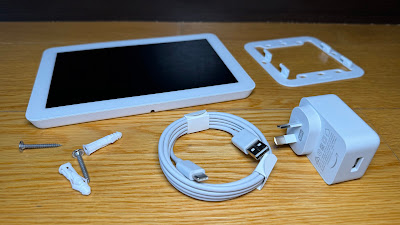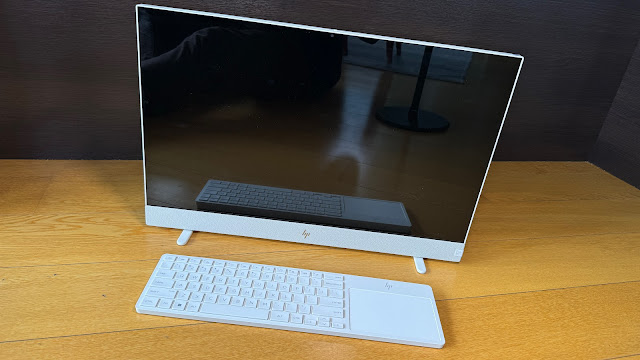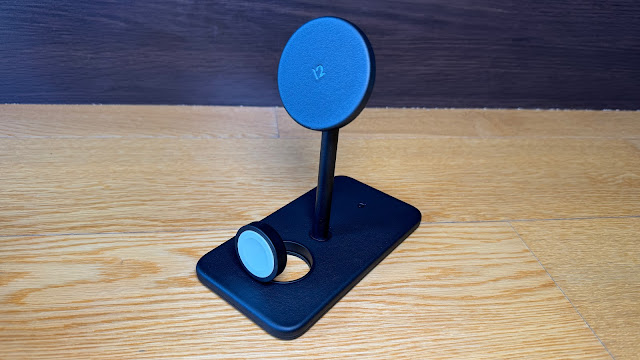Every now and then I like to try a gadget that isn't strictly a "tech" device but is still tech-adjacent.
I've had a bad back as long as I can remember. So I guess that qualifies as chronic pain. Once it got so bad I spent a lot of money on a specialist who told me it was probably all due to a childhood injury I sustained when a fell off a piece of playground equipment.
Whatever the original cause, a lot of other stuff has happened to me over the years that certainly hasn't helped. Decades of terrible posture for a start. Dislocating one shoulder, then breaking the other ten years later wasn't fun either.
Then, on top of it all, I sit around hunched over keyboards and sound desks all day.
That last bit probably sounds familiar to most people. Even just standing or sitting, scrolling on your phone tends to make you curl over like a brittle, dried-up leaf.
Then, no matter how much you stretch and exercise, that tension just seems to get worse - almost as if it's compounding every day.
Because of my banged-up shoulders, I've now been diagnosed with a nerve condition called Complex Regional Pain Syndrome (CRPS) which means I have to take nightly medication just so I can sleep.
Bummer. What to do?
The Lotus Wheel isn't a magic back pain bullet but I do believe it's definitely helping.
To say there's no tech involved in the design of the Lotus Wheel isn't true, of course. Although the wheel itself doesn't have any moving parts, it's not just a random assemblage of plastic and rubber either. I'd like to tell you exactly what it's made of but to be honest, even though the Lotus Wheel 3-Pack arrives in a nice box, there's no packaging (good) and very little information.
There is a little eleven-page leaflet that tells you "All You Need To Know." That includes how to use the three wheels to help relieve back pain and tension and suggests other uses like correcting posture, deep stretching and rolling for muscle recovery.
While that may be all I "need" to know, it's not all I "want" to know. For example; how long should I use the Lotus Wheel for? How many times should I roll up and down on it and should I use it more than once a day? Seriously, what are the rules here?
So I visited the Lotus Wheel website and while it's a very uncluttered site that expands slightly on what was in the leaflet, despite a few user reviews there's not much more to be found - however, after a bit more clicking I did discover the "supreme comfort foam padding" is 10mm thick and the ABS plastic core can hold up to 200kgs (phew).
I was expecting a few instructional demo videos but no, just the three Lotus Wheels; a 33cm Gentle option, a 27cm Firm one and a 17cm model for Deep Tissue. You can choose between black or green inners and the 3-pack with one of each size is only NZ$149.00 - which I think is a steal for any kind of gym equipment - especially something that seems to be as well-manufactured as these are.
So...
I figured the only thing left to do was to give them a go, starting with the largest wheel to minimise the pressure over a bigger surface area.
As far as basic operation goes, it really is just that; basic. You sit on the floor with the wheel behind you, then lie back onto it, rolling it up and down your spine - except... that's not strictly accurate because each wheel has a "Spinal Groove" to minimise pressure on your backbone itself. Instead, it's the muscles either side that get the real workout, although there's no doubt your spine opens up right away - even on the very first roll.
Everyone in my household has immediately achieved a few satisfying clickety-clacks with very little effort and I'm amazed how I seem to be able to get that kind of relief every time I use it. I also quickly identified exactly which part of my back harbours the most tension and it's that bit I focus on the most.
Although the "All You Need To Know" leaflet recommends starting with the large Lotus Wheel and eventually working your way down, I'm not a particularly patient patient, so I cracked straight on (pun intended).
There's no doubt the smaller you go, the more intense the pressure - that's just basic physics - but the great thing about the smallest, 17cm wheel is you can give your neck a good roll with it, even if it's just against the wall.
As I type this, I'm also using it behind my back against my office chair to assist with my usually-terrible posture.
The Lotus Wheels can also be used for other stretches like traditional foam rollers and like those rollers, you can target sore and fatigued muscles in other parts of your body as well.
But if you have a back you like to crack, this is the targeted device especially for you. It turns out, that leaflet really was all I needed to know - how many times and how often I use it is up to me. There's a nagging voice in the back of my head that says maybe I should have consulted my healthcare professional before using something like this and indeed, those very words are printed on the Lotus Wheel leaflet but... whatevs.
And it turns out I was just being a crusty old boomer looking for vids on the website. Why would they be there when they can be posted on the @thelotuswheel Insta page?















-2.JPG)
-4.JPG)
-1.JPG)
-3.JPG)



























